Welcome to the enchanting world of stargazing! Imagine a world where you can journey beyond the confines of our planet and explore the vastness of the universe just by looking up at the night sky. Stargazing is not just about seeing distant stars; it’s about unlocking the mysteries of the cosmos and sparking your imagination.
For children, stargazing is like discovering a treasure trove of secrets hidden in the night sky. It’s a magical experience that ignites curiosity and wonder. Each twinkling star has a story to tell, and every constellation forms a picture waiting to be unraveled.
In this guide, we’ll delve into the wonders of stargazing for children, exploring the basics of astronomy in a fun and accessible way. Get ready to embark on an adventure that will inspire you to reach for the stars and expand your horizons. Let’s dive into the magic of stargazing together!
Table of contents
- Basics of Astronomy for Kids
- Choosing the Right Equipment
- Identifying Constellations
- Exploring the Moon
- Planet Spotting Adventures
- Creating a Stargazing Toolkit
- Stargazing Games and Activities
- Stargazing Events and Clubs
- Stargazing Apps for Kids
- Night Sky Camping Adventures
- Space-Themed Arts and Crafts
- Conclusion
- Frequently Asked Questions
Basics of Astronomy for Kids
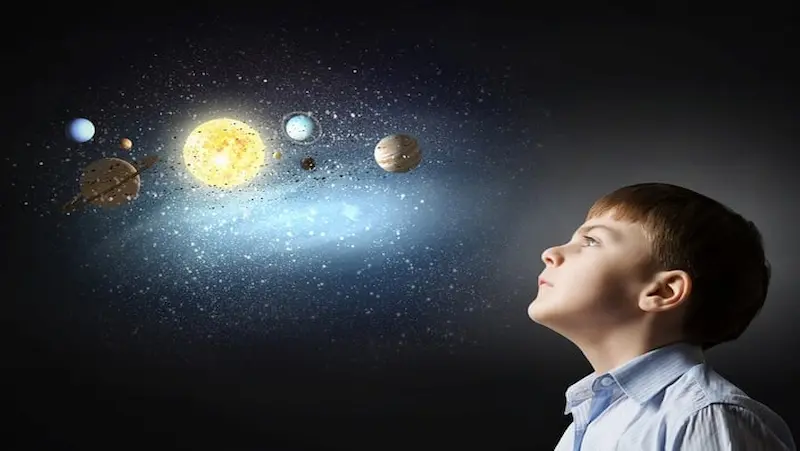
Understanding Stars and Constellations
Have you ever looked up at the night sky and wondered about those twinkling dots of light? Those are stars! Stars are enormous balls of hot gas that produce light and heat. They come in different sizes, colors, and brightness. Some stars are so big that they could fit millions of Earths inside them, while others are smaller than our own sun.
Now, have you noticed groups of stars forming patterns in the sky? These are called constellations! Constellations are like imaginary pictures drawn in the sky by connecting stars. They have been named after animals, mythological characters, and even everyday objects. Can you find the Big Dipper or Orion in the sky? That’s identifying constellations!
Introduction to Planets and Celestial Bodies
Apart from stars, there are other fascinating objects in space, such as planets and celestial bodies. Planets are like big balls of rock or gas that orbit, or go around, stars. We live on one called Earth! There are eight planets in our solar system, including Mercury, Venus, Mars, Jupiter, and Saturn, each with its own unique features.
Celestial bodies refer to anything in space, like moons, asteroids, and comets. Moons are like little worlds that orbit planets. Did you know Jupiter has over 79 moons? Asteroids are rocky objects that orbit the sun, and comets are made of ice and dust, trailing beautiful tails when they get close to the sun.
Learning about stars, constellations, planets, and celestial bodies can open up a whole new world of wonder and discovery! So, next time you gaze up at the night sky, remember that there’s a lot more to explore out there beyond just twinkling stars.
Choosing the Right Equipment
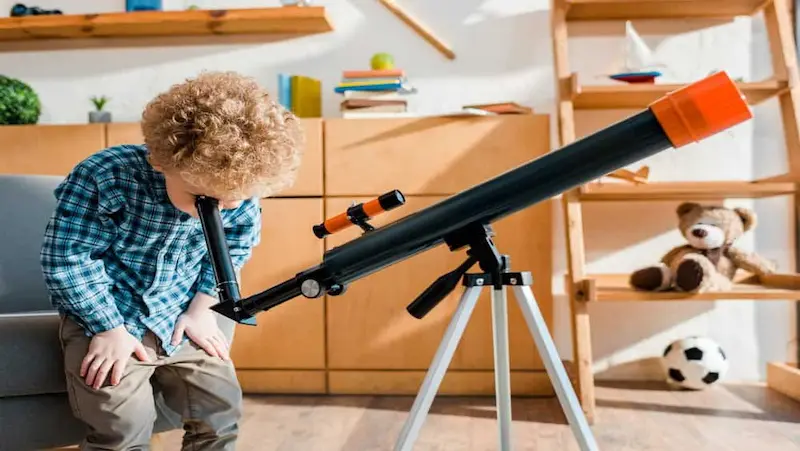
Kid-Friendly Telescopes
When it comes to nurturing a love for the stars in our little ones, having the right telescope can make all the difference. But with so many options out there, it can feel overwhelming. Fear not! We’re here to guide you through the maze of choices to find the perfect kid-friendly telescope.
First things first, let’s talk about size. Kids need telescopes that are lightweight and easy to handle. Look for ones with smaller apertures (that’s the diameter of the telescope’s main lens or mirror) as they’re easier for small arms to manage.
Next up, consider durability. We all know how rough and tumble kids can be, so opt for telescopes made from sturdy materials that can withstand a few bumps and knocks.
And don’t forget about simplicity. Kids want to dive into stargazing without getting bogged down by complicated setups. Look for telescopes with straightforward controls and easy assembly, so they can spend less time fussing with the equipment and more time exploring the cosmos.
Finally, think about affordability. You don’t need to break the bank to ignite a passion for astronomy in your child. There are plenty of budget-friendly options that still offer quality optics and a great viewing experience.
Binoculars and Other Stargazing Tools
Telescopes aren’t the only tools in the stargazing arsenal. Binoculars can be a fantastic alternative, especially for younger kids who might find telescopes a bit too bulky or complicated.
When choosing binoculars for stargazing, there are a few key things to keep in mind. First off, go for ones with a decent magnification power. Aim for around 7x to 10x magnification – anything higher and it can be tricky to keep the image steady.
You’ll also want to consider the size of the binoculars. Look for compact models that are lightweight and easy for little hands to hold. And don’t forget about the field of view – wider is better when it comes to scanning the night sky.
If you want to take your stargazing to the next level, there are plenty of other tools and accessories to consider. Star charts and astronomy apps can help you navigate the heavens, while filters can enhance your view of celestial objects like the moon and planets.
Identifying Constellations
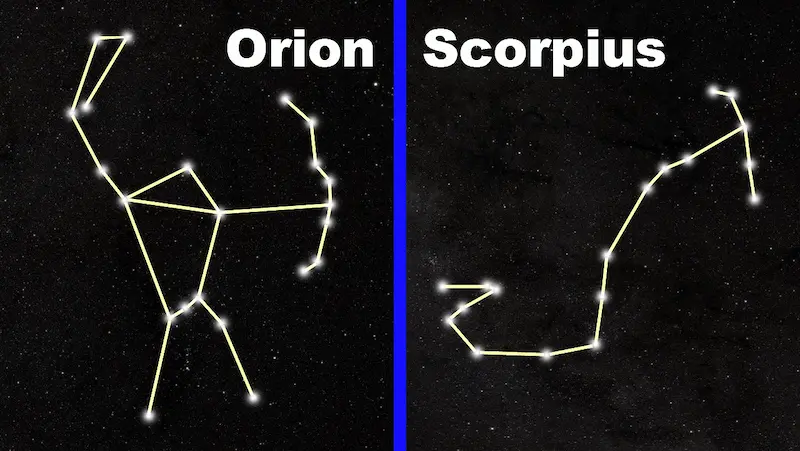
Learning to identify constellations can be an exciting journey, especially for kids eager to explore the wonders of the universe.
Popular Constellations for Kids:
- Orion: Perhaps one of the most famous constellations, Orion is easy to spot with its three bright stars forming the “belt” and a sword hanging from it. It’s like a celestial hunter roaming the night sky.
- Ursa Major (The Big Dipper): Look for a group of seven stars resembling a ladle or a question mark. It’s part of the larger constellation Ursa Major, also known as the Great Bear.
- Leo: This constellation represents a lion and is often recognized by a backward question mark shape that forms the lion’s head and chest.
- Cassiopeia: Shaped like a “W” or “M,” depending on its position in the sky, Cassiopeia is named after a queen from Greek mythology and is quite prominent in the northern hemisphere.
- Pegasus: Imagine a giant square in the sky. That’s Pegasus, the mythical winged horse. It’s a bit trickier to spot but worth the hunt.
Creating Constellation Maps:
- Start with the Basics: Begin by identifying the most well-known constellations, like those mentioned above. Use a sky map or a stargazing app to help locate them in the night sky.
- Connect the Dots: Constellations are like connect-the-dot puzzles. Encourage kids to find the brightest stars in the sky and connect them to form the shapes of different constellations.
- Get Creative: Once you’ve mastered the popular constellations, challenge your young astronomers to create their own! They can invent stories behind their new constellations and even give them unique names.
- Practice, Practice, Practice: Like any skill, identifying constellations takes practice. Make stargazing a regular activity, and soon enough, you’ll all become experts at spotting these celestial wonders.
Exploring the Moon
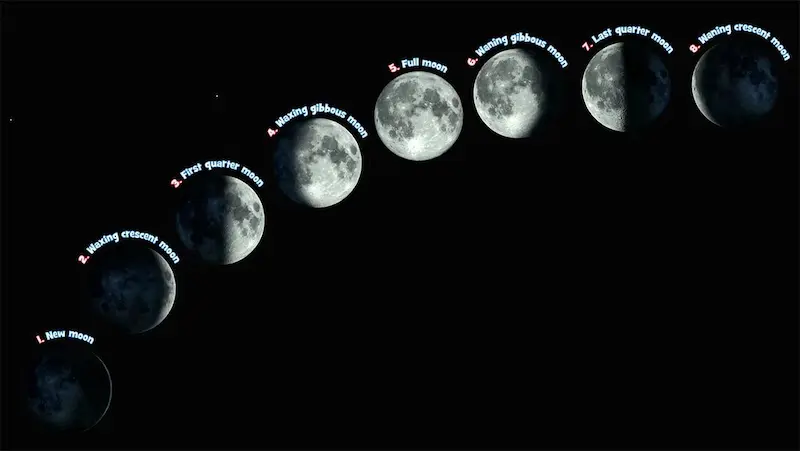
Lunar Phases and Observations
A. Lunar Phases and Their Beauty
- The Moon changes its appearance in the sky throughout the month, cycling through different phases.
- The phases include New Moon, Waxing Crescent, First Quarter, Waxing Gibbous, Full Moon, Waning Gibbous, Last Quarter, and Waning Crescent.
- These phases result from the changing positions of the Moon, Earth, and Sun, casting shadows and creating the mesmerizing lunar cycle.
- Observing these phases can be done with the naked eye or through binoculars or telescopes, enhancing the experience and allowing for closer examination of details like craters and mountains.
B. Stargazing and Moon Watching
- Many people enjoy stargazing and moon watching as a hobby or recreational activity.
- It offers a peaceful and awe-inspiring experience, connecting us with the vastness of the universe.
- Whether it’s a romantic evening or a solo adventure, observing the Moon can be a relaxing and fulfilling pastime.
- People often gather during special lunar events like lunar eclipses or supermoons to witness these natural wonders and share the experience with others.
Moon Exploration Activities
A. Historic Moon Landings
- The Apollo missions, notably Apollo 11 in 1969, marked the first human landings on the Moon.
- Astronauts like Neil Armstrong and Buzz Aldrin became household names as they took humanity’s first steps on the lunar surface.
- These missions provided invaluable scientific data and expanded our understanding of space exploration.
B. Current and Future Exploration
- Various space agencies, including NASA, ESA, and CNSA, continue to explore the Moon through robotic missions.
- Rovers and landers collect data about the lunar surface, composition, and environment, paving the way for future human missions.
- Plans for establishing lunar habitats and conducting scientific research are underway, with the goal of sustained human presence on the Moon in the coming decades.
- Private companies are also entering the space race, with ambitions of lunar tourism and resource extraction.
C. International Collaborations
- Moon exploration is a collaborative effort involving multiple countries and organizations.
- Initiatives like the Artemis program aim to return humans to the Moon, with international partnerships contributing expertise, technology, and resources.
- Collaborations foster scientific advancement and promote peaceful cooperation in space exploration.
Planet Spotting Adventures

Learning About Our Solar System
Before we dive into the thrilling experience of observing planets, let’s take a moment to appreciate the vastness and beauty of our solar system. Our solar system consists of the Sun, eight planets, moons, asteroids, comets, and a whole lot more. Each planet has its own unique characteristics, from the scorching heat of Mercury to the icy plains of Neptune.
Learning about our solar system is like unraveling a captivating story. You’ll be amazed by the sheer diversity of planets and their intriguing features. Whether it’s the giant storms on Jupiter or the mysterious rings of Saturn, there’s always something new and exciting to discover.
Observing Planets with the Naked Eye
Now, let’s talk about the thrill of observing planets with nothing but your naked eye. Believe it or not, you don’t need fancy equipment to embark on a planet spotting adventure. All you need is a clear night sky and a sense of wonder.
Start by familiarizing yourself with the night sky. Look for bright, star-like objects that don’t twinkle – those are likely planets! The five planets visible to the naked eye are Mercury, Venus, Mars, Jupiter, and Saturn. Each one has its own distinct appearance and can be spotted at different times of the year.
Mercury and Venus are often seen near the horizon just before sunrise or after sunset, appearing as bright “morning” or “evening” stars. Mars has a reddish hue and can be spotted throughout the night, especially when it’s closest to Earth during its opposition. Jupiter is the largest planet in our solar system and shines brightly, while Saturn’s rings make it a truly mesmerizing sight.
Take your time to observe these celestial wonders. Find a comfortable spot away from city lights, and let your eyes adjust to the darkness. Use a star chart or a stargazing app to help you locate the planets, and don’t forget to bring along a pair of binoculars for a closer look.
As you gaze up at the night sky, you’ll feel a sense of awe and wonder wash over you. The planets remind us of our place in the universe – tiny specks in a vast cosmos waiting to be explored.
Creating a Stargazing Toolkit
DIY Star Charts
- Start by printing out or drawing a map of the night sky. You can find free templates online or buy a star chart book.
- Learn to identify major constellations like Orion, Ursa Major (the Big Dipper), and Cassiopeia. These are great starting points for beginners.
- Use a red flashlight when reading your star chart to preserve your night vision. You can make one easily by covering a regular flashlight with red cellophane or tape.
- Mark important stars and celestial objects on your chart, like the North Star (Polaris) or bright planets currently visible.
- Update your star chart regularly to reflect changes in the night sky throughout the year, such as the movement of planets or the appearance of comets.
Building Simple Telescopes and Gadgets
- Make a simple refracting telescope using household materials like cardboard tubes, lenses (which you can often find in old binoculars or cameras), and duct tape. There are plenty of tutorials online to guide you through the process.
- Experiment with different magnifications by using lenses with varying focal lengths. This can help you get a closer look at distant stars, planets, and even the moon.
- Construct a star wheel or planisphere, which is a simple device that helps you determine which constellations are visible at any given time of year. You can make one using a circular piece of cardboard, a brad fastener, and a printout of the night sky for your latitude.
- Explore DIY gadgets like smartphone adapters for telescopes, which allow you to capture photos of celestial objects through your telescope’s eyepiece. These adapters can be purchased online or 3D-printed if you have access to a 3D printer.
- Don’t be afraid to get creative and customize your tools to suit your needs. Building your stargazing equipment can be a fun and rewarding experience that enhances your connection to the cosmos.
Stargazing Games and Activities
Stargazing isn’t just about looking up at the sky and admiring the stars; it can also be a whole lot of fun with some creative games and activities. Whether you’re out with friends, family, or even just by yourself, here are a couple of entertaining ways to make your stargazing experience even more memorable:

Constellation Bingo
Constellation Bingo is a delightful twist on the classic game that everyone loves. Instead of numbers, you’ll be spotting constellations in the night sky! It’s a fantastic way to learn about different constellations while having a blast.
To play, create bingo cards with various constellations instead of numbers. You can find templates online or make your own. Then, head outside with your bingo cards and some markers. As you spot constellations in the sky, mark them off on your card. The first person to get five in a row (horizontally, vertically, or diagonally) wins!
Not only is Constellation Bingo entertaining, but it also helps you become more familiar with the night sky. Plus, it’s a fantastic activity for all ages, making it perfect for stargazing parties or family nights under the stars.
Night Sky Scavenger Hunt
A Night Sky Scavenger Hunt is an exciting way to explore the heavens above. It’s like a traditional scavenger hunt, but instead of searching for items on the ground, you’ll be hunting for celestial objects in the sky.
To set up your scavenger hunt, create a list of items to find in the night sky. This could include specific constellations, planets, stars of a certain color, or even phenomena like shooting stars or satellites. Be creative with your list to make the hunt more challenging and engaging.
Once you have your list, head outside with a flashlight, a blanket to lay on, and your scavenger hunt list. Lie back and gaze up at the stars, using your list to guide your search. As you find each item, check it off your list.
A Night Sky Scavenger Hunt is not only entertaining but also educational. It encourages you to explore the night sky and learn about different celestial objects. Plus, it’s a fantastic way to spend quality time with friends and family while marveling at the wonders of the universe.
Stargazing Events and Clubs
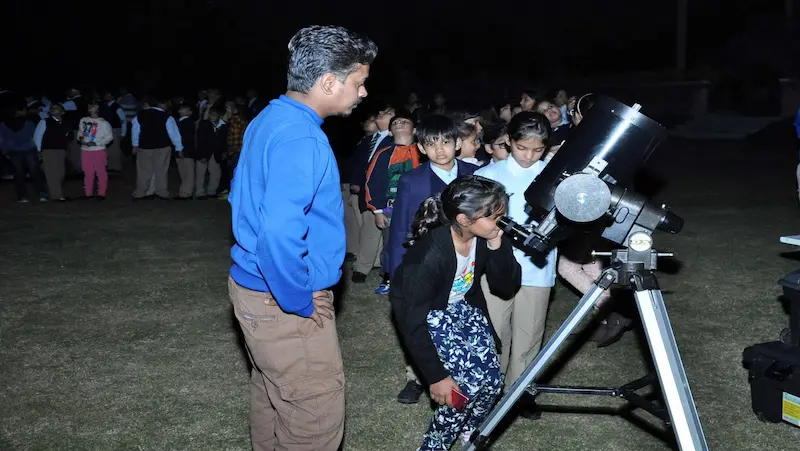
Local Astronomy Clubs for Kids:
- Junior Astronomers Program: Many local astronomy clubs offer special programs tailored specifically for kids. These programs often include hands-on activities, workshops, and educational sessions designed to spark curiosity and excitement about space.
- Stellar Socials: Astronomy clubs frequently organize social events where young enthusiasts can meet like-minded peers, share their passion for the stars, and even participate in group stargazing sessions.
- Workshops and Talks: Look out for astronomy clubs that host workshops and talks geared towards young astronomers. These events cover a range of topics, from basic stargazing techniques to more advanced concepts like black holes and supernovas.
- Field Trips and Observations: Some astronomy clubs organize field trips to observatories or dark sky sites, providing kids with the opportunity to observe celestial objects through telescopes and learn from experienced astronomers.
Family-Friendly Stargazing Events:
- Starry Nights in the Park: Many parks and nature reserves host family-friendly stargazing events throughout the year. These events typically feature guided night sky tours, telescope viewing stations, and educational activities suitable for all ages.
- Planetarium Shows: Check out your local planetarium for family-friendly shows that offer immersive experiences into the wonders of the universe. From virtual tours of the solar system to captivating presentations on the history of astronomy, there’s something for everyone to enjoy.
- Annual Meteor Showers: Keep an eye out for annual meteor showers like the Perseids or Geminids, which offer spectacular celestial displays visible to the naked eye. Pack some blankets, snacks, and binoculars, and head to a dark, open area away from city lights for the best viewing experience.
- Community Observatory Nights: Some cities have community observatories that host regular open house nights for families. These events often feature telescope viewing sessions, astronomy-themed activities, and opportunities to interact with local astronomers.
Stargazing Apps for Kids
Interactive Apps for Learning:
- SkyView Lite: This app acts as a personal planetarium right on your phone! Kids can point their device towards the sky, and SkyView Lite will identify stars, constellations, and even satellites in real-time. It’s like having a virtual tour guide to the universe!
- Star Walk 2: With its beautiful graphics and user-friendly interface, Star Walk 2 lets kids explore the night sky effortlessly. They can learn about different celestial objects, watch animated videos, and even travel through time to see how the sky changes over centuries.
- NASA App: Who wouldn’t want to explore space with NASA? This app provides access to a wealth of information, including stunning images, videos, and articles about space exploration. Kids can learn about the latest discoveries and missions straight from the experts.
Augmented Reality Stargazing:
- Night Sky: Bring the stars into your living room with Night Sky’s augmented reality feature! Kids can use their device to see a detailed 3D model of the night sky right above them. They can also track the International Space Station and various satellites as they orbit overhead.
- Star Chart: This app uses augmented reality to superimpose constellations, planets, and even galaxies onto the real sky visible through your device’s camera. It’s like having a portable planetarium wherever you go!
- SkySafari: With SkySafari, kids can embark on an exciting journey through space using augmented reality. They can explore the solar system, learn about different celestial objects, and even witness simulated space missions up close.
Night Sky Camping Adventures

Stargazing While Camping
Picture this: you’re nestled in your cozy sleeping bag, the crackling campfire nearby casting a warm glow, and above you, the night sky is ablaze with stars. Away from the pollution and distractions of city life, the stars seem to shine brighter, painting the sky with their celestial dance. Whether you’re a seasoned astronomer or just someone who appreciates the beauty of the night sky, camping offers the perfect opportunity to marvel at the wonders above.
One of the best things about stargazing while camping is the simplicity of it all. All you need is a clear night and a comfortable spot to lay back and look up. Whether you’re camping in the mountains, by the beach, or in a secluded forest, the night sky never fails to captivate. Take your time to let your eyes adjust to the darkness, and soon you’ll be able to spot constellations, planets, and even shooting stars streaking across the sky.
Creating Stargazing Rituals
While stargazing itself is a magical experience, you can enhance it even further by creating your own stargazing rituals. These rituals can help you connect more deeply with the night sky and make your camping experience truly memorable.
Start by finding a quiet spot away from the campsite where you can fully immerse yourself in the night sky. Bring along a blanket or a comfortable chair to sit or lie on, and perhaps a hot drink to keep you warm on chilly nights. As you settle in, take a few moments to quiet your mind and soak in the sights and sounds around you.
One popular stargazing ritual is to keep a journal or sketchbook to record your observations. Note down any interesting phenomena you see, such as the appearance of a new star or the path of a meteor shower. You can also use your journal to jot down any thoughts or reflections that come to mind as you gaze up at the stars.
Another idea is to incorporate storytelling into your stargazing experience. Learn about the myths and legends behind the constellations and share them with your camping companions. As you trace the outlines of the stars above, you’ll feel a deeper connection to the ancient stories that have been passed down through generations.
Space-Themed Arts and Crafts
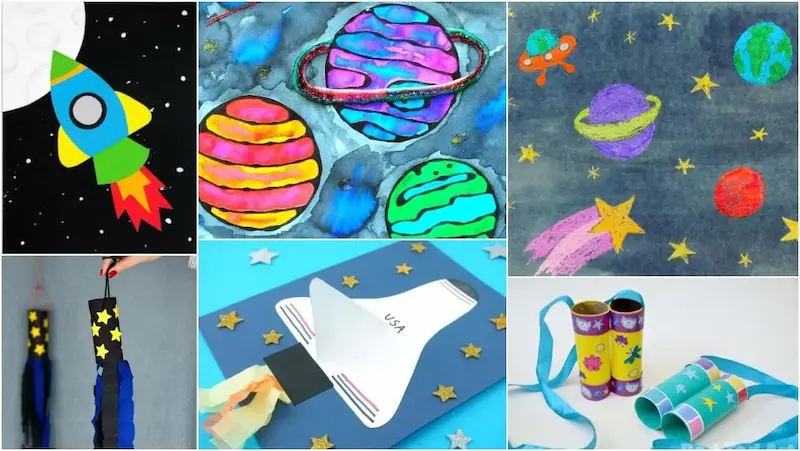
Creating DIY Planets and Stars:
- Gather your materials: Start by collecting supplies like styrofoam balls, paint, brushes, and glitter. You can also use paper mache techniques or even recycled materials for an eco-friendly approach.
- Design your celestial bodies: Whether you’re replicating our solar system or inventing your own galaxy, let your imagination run wild. Experiment with different colors, textures, and sizes to bring your planets and stars to life.
- Paint with precision: Use fine brushes to add intricate details like craters, rings, and atmospheric layers. Don’t forget to reference real images of planets and stars for inspiration.
- Add a touch of sparkle: Sprinkle glitter or metallic paint to mimic the shimmering brilliance of distant stars. This extra dazzle will make your creations truly out-of-this-world.
- Display your masterpiece: Once your DIY planets and stars are complete, showcase them in your room, classroom, or even outdoors. Create a mobile or hang them from the ceiling for a celestial spectacle that’s sure to amaze.
Space-themed Art Projects:
- Galaxy painting: Dip your brushes into an array of cosmic colors like deep blues, purples, and splashes of vibrant nebulas. Blend and swirl your paints to create a mesmerizing galaxy on canvas or paper.
- Lunar landscapes: Capture the serene beauty of the moon’s surface with textured paintings or sculptures. Experiment with different mediums like clay, sand, or even melted wax to recreate its craggy terrain.
- Astronaut adventures: Illustrate daring space explorations with drawings or collages featuring brave astronauts and futuristic spacecraft. Let your imagination take flight as you envision epic missions beyond Earth’s atmosphere.
- Cosmic collages: Collect magazines, newspapers, and colorful paper scraps to assemble dazzling collages inspired by the cosmos. Mix and match images of galaxies, stars, and planets to create a visually stunning masterpiece.
- Constellation creations: Connect the dots to recreate your favorite constellations using glow-in-the-dark paint or string lights. Hang them on your walls or ceiling for a celestial display that twinkles in the night.
Conclusion
In conclusion, embarking on stargazing adventures offers more than just a glimpse into the vastness of the universe. It nurtures curiosity in ways that textbooks or screens cannot match. Through the simple act of looking up at the night sky, we’re reminded of our place in the cosmos and inspired to ask questions about the mysteries that lie beyond.
These adventures not only cultivate a sense of wonder but also encourage us to explore, learn, and appreciate the beauty and complexity of the world around us. So, let’s continue to foster our curiosity through stargazing, for in doing so, we may uncover new wonders and deepen our understanding of the universe and ourselves.
To get your hands on more such articles, educational content, and free resources on coding classes for kids, online robotics classes for kids, game development, etc., check out the BrightCHAMPS Page now!
Frequently Asked Questions
A1. This program is ideal for kids aged 8-12, but younger and older kids can also enjoy it.
A2. Kids will explore planets, stars, galaxies, constellations, and more in an engaging and interactive way.
A3. No prior knowledge is needed. This program is designed to be fun and educational for beginners.
A4. You can access it online through our website or by downloading our mobile app.
A5. Yes, kids will have the chance to do hands-on activities and experiments to make learning about astronomy even more enjoyable.

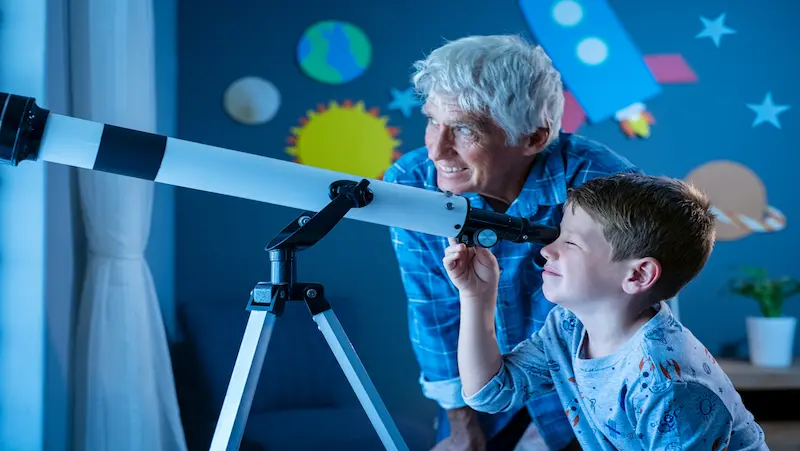
 We are an army of educators and passionate learners from BrightChamps family, committed to providing free learning resources to kids, parents & students.
We are an army of educators and passionate learners from BrightChamps family, committed to providing free learning resources to kids, parents & students.








